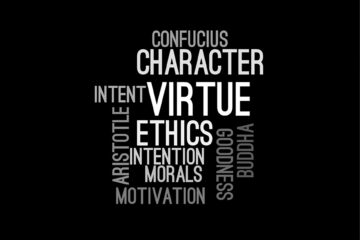![]()
Introduction:
Jurisprudence is the study and systematic arrangements of general principles of law. Various Jurists and Scholars have defined Jurisprudence in their own words and have their different personal views. Bentham is known as the father of jurisprudence. According to Black’s Law dictionary Ownership is defined as the collection of rights allowing one to use and enjoy the property[1]. Historically first the concept of possession came into light and then the conception of ownership gradually developed. The use of the word ‘owner’ was made in 1340 and of ‘ownership’ in 1583. The right to possess the property became the idea of ownership. Ownership has a unique place in the legal and social concepts of a society.
Ownership is all about claims, privileges, powers, and immunities with regard to the things we own. Ownership is a complex juristic concept which originated from the Roman law. The conception of ownership is different in English laws in that of Roman law because of their peculiar features. Ownership includes possession, Disposition, Destruction, and has the right to enjoy property by the owner. Ownership is a social institution. The extent of the rights, privileges, powers, and immunities that are exercisable by an owner reflect the social policy of the legal system. Ownership arises only in such a way as are specified by each legal system, as, in classical Roman law for the transfer of ownership in certain kinds of things, special ceremonies were required.[2]
Ownership
The relation of the person with any object/thing is absolute and has the right of complete control and enjoyment of the object is known as ownership. the subject matter of ownership consists of material objects like land, chattels, etc. the wealth and assets of a person such as interests in the land, debts due to his shares in a company, patents, copyrights, etc. may also be the subject matter of ownership. Thus intangible rights may also constitute the subject matter of ownership. Ownership can be seen in our day to day activities. In the Bank Nationalization case 1970, the Supreme Court held that property includes not only tangible things but also intangible things, (Rustom Cavasjee Cooper v. Union of India[3].
Likewise, the Supreme Court has held privy purses as property within the meaning of Article 19 and 31 of the constitution. Ownership may either be absolute or restricted, that is it may be exclusive or limited. Ownership can be limited by agreements or by operation of law. The right of ownership can be restricted in times of emergency. An owner is not allowed to use his land or property in a manner that is injurious to others. His right of ownership is not unrestricted. The owner has a right to possess the thing that he owns. It is immaterial whether he has actual possession of it or not. The right to ownership does not end with the death of the owner, but it is transferred to his heirs.
Austin’s Definition
Austin while defining ownership has focused on the three main attributes of ownership, namely, indefinite user, unrestricted disposition, and unlimited duration which may be analyzed in detail.[4]
Salmond’s Definition
According to the Salmond ownership vests in the complex of rights which he exercises to the exclusion of all others. For Salmond what constitutes ownership is a bundle of rights that inhere resides in an individual.[5]
The concept of ownership is interconnected with some other concepts and we need to distinguish them.
- Custody: It is the relation of the person with an object where he/she has no full control over the object.
- Detention: It is the relation of the person where a person has possession over a thing but law due to certain reasons do not recognize its possession.
- Possession: It is a relation of a person to an object which law recognizes as a possession.
Ownership and property are the two aspects of the same relation, and are mutually interdependent. One can’t be fully understood without others. The owner is he who is entitled to the residue of rights concerning an object left after the limitation resulting from the voluntary acts of the owner or those imposed by law are exhausted.
Attributes of Ownership
- The right of possession
- The right of enjoyment of the property
- The power to dispose of the property ( there are certain restrictions on it)
Article 19 of the Constitution of India[6] says that
All citizens shall have the right, to acquire, hold and dispose of property,
The state can impose reasonable restrictions on the exercise of the right by the law in the interests of the general public, or for the protection of the interests of any scheduled tribe. (Article 19(5)).[7]
The state cannot deprive anyone of the property owned by him except in the manner and for the purpose prescribed by law.
Types of Ownership
- Corporeal and Incorporeal Ownership: Corporeal Ownership refers to the ownership of a physical object. And Incorporeal Ownership refers to the ownership of the right which doesn’t exist in physical state. Ex. Intellectual Property.
- Legal ownership and Equitable Ownership: Legal ownership is based on common law whereas equitable ownership is based on principles of equity.
- Trust Ownership and Beneficial Ownership: Trust ownership is between two people known as the trustee and beneficiary. The trustee is merely an agent upon whom the law has placed duty to administer the rights over the property for a beneficiary. Beneficiary ownership deals with the beneficiary of a trust who has the full enjoyment and complete ownership of his property.
- Absolute Ownership And Limited Ownership: Absolute ownership is when possession, enjoyment, disposal are complete and vested without restrictions. Limited ownership occurs when there are limitations on the user.
- Vested Ownership and Contingent Ownership: Vested ownership is having a perfect right (enjoyment and privilege) over a future property (ownership of a chattel). Ownership is said to be contingent when it is capable of being perfect after the fulfillment of certain conditions.
- Sole ownership and Co-Ownership: Sole ownership is that which is owned by an individual only. Co-ownership refers to the property owned by more than one person.
According to Indian Law. Co-owner is entitled to three rights:
- Right to possession
- Right to enjoy the property
- Right to dispose of
Therefore, if a co-owner is deprived of property, he has the right to be put back in possession. Such co-owner has an interest in every portion of the property and has a right irrespective of his quantity of share to be in possession jointly with other co-owners.
Method of Ownership
There are two methods:
- Original: Original acquisition of ownership takes place when ownership is acquired by some personal acts on the part of the acquirer. In this acquisition, there are three other subtypes:
- Absolute: when a thing/object is acquired which has no previous owner it is called absolute.
- Extinction: When a person by some act on his ownership of the previous owner and acquires its ownership himself.
- Accessory: when the ownership of a property is acquired by way of accession to some existing property.
- Derivative: When the ownership is derived from a previous owner, it is called the derivative acquisition of ownership. It takes place when ownership is acquired by inheritance or gift or purchase.
Conclusion
The owner has the right to use the subject matter of ownership according to his own will and discretion. Here use means personal use and the enjoyment of the thing by the owner. This right of enjoyment or use is not absolute, it can be and is in fact, limited by law. They don’t have any right to harm the right of others.
References:
[1] https://thelawdictionary.org/owner/
[2] https://blog.ipleaders.in/jurisprudential-aspect-of-ownership/#:~:text=The%20bundle%20of%20right%20of,the%20property%20of%20that%20person.
[3] AIR 1970 SC 564 : (1970) 3 SCR 530
[4] http://www.legalservicesindia.com/article/1281/Ownership.html
[5] http://www.legalservicesindia.com/article/1281/Ownership.html
[6] https://www.india.gov.in/sites/upload_files/npi/files/coi_part_full.pdf
[7] https://www.india.gov.in/sites/upload_files/npi/files/coi_part_full.pdf



0 Comments